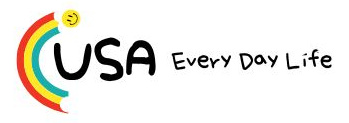Honeywell moved higher Thursday after the sprawling conglomerate reported a quarterly beat and a full-year guidance raise ahead of next week’s first step to split into three companies. Revenue in the third quarter ended Sept. 30 rose 7% year over year to $10.41 billion, topping expectations of $10.11 billion, according to market data service LSEG. Organic sales advanced 6% versus the year-ago period, double what the Street was looking for, according to FactSet. Adjusted earnings per share rose 9.3% from last year to $2.82, exceeding estimates of $2.57, LSEG data showed. HON YTD mountain Honeywell YTD While jumping more than 7% on the print, Honeywell shares were still down roughly 2% year to date and 8% below their July 3 record high close of just over $240. The Club stock, which is also one of the 30 names that make up the Dow Jones Industrial Average , has been stuck in so-called spin purgatory. Next week’s spinoff of Solstice Advanced Materials is a good start to get the stock out of the doghouse. The split of the company’s remaining automation and aerospace businesses in the second half of 2026 will complete the two-step makeover. Honeywell shareholders as of Oct. 17 will get one share of Solstice for every four shares of Honeywell on Oct. 30. Later that day, Solstice is set to begin trading separately under the ticker “SOLS.” Honeywell’s ticker will continue to be “HON.” We plan will be to keep our Solstice shares when we get them and our Honeywell shares. Bottom line With quarterly sales, earnings, and organic growth all outpacing expectations, perhaps the most important takeaway from the report is the comeback in aerospace, which is Honeywell’s largest and most consequential segment. Last time around, it missed expectations. In the third quarter, it bounced back as customer destocking eased, and commercial original equipment sales returned to growth. Management sees the segment sustaining its momentum through the remainder of the year. Honeywell also reported a record backlog, up 11% year over year, excluding acquisitions, to $39.1 billion, which is equivalent to about a year’s worth of revenue. Driving that growth was an incredible 22% year-over-year increase in orders, resulting in a book-to-bill of 1.1, meaning the company is taking in orders more quickly than it can fulfill them. Order growth was realized in all four segments, which in addition to Aerospace Technologies, include Industrial Automation, Building Automation, and Energy & Sustainability Solutions. Why we own it Honeywell is a provider of industrial technology to firms in various industries. The company’s planned three-part breakup should be a value-creating event for shareholders. Competitors: Emerson Electric , RTX , 3M Weight in portfolio: 2.3% Most recent buy: Sept. 11, 2025 Initiated: July 5, 2020 Better yet, the team increased its outlook for the full year for both sales and EPS, after adjusting for the impact of the Solstice spin, as well as for organic sales growth. With the upcoming Solstice spin and aerospace rebounding, we continue to like Honeywell stock at current levels. These spins stand to support further growth and drive shareholder returns as they will allow each of the three new entities to operate in a more focused and efficient manner. Honeywell is offering an attractive opportunity for investors patient enough to let the spin dynamics play out. Management is proving to be effective operators, and that should be even more true once the spinoffs are complete. Therefore, we’re reiterating our buy-equivalent 1 rating and $255-per-share price target. Commentary Honeywell’s third-quarter sales beat came on the back of stronger-than-expected revenue in all key operating segments. While segment margin was 23.1, a tad lower than expected, segment profit of $2.41 billion still managed to outpace expectations, leading to a beat on the bottom line. Third-quarter sales in Aerospace Technologies grew more than 15%, or 12% organic, to $4.51 billion. Though the segment margin contracted year over year “as commercial excellence and volume leverage were more than offset by cost inflation and acquisition-related headwinds,” the company said. It did, however, expand sequentially thanks to improved volume leverage – more volume means that fixed costs are spread out across more units. It lowers per-unit costs and drives greater per-unit profit. On the post-earnings call, management said that commercial aviation original equipment returned to growth after the prior quarter’s customer destocking pressure. Destocking happens when customers slow or pause orders to work down existing inventory levels. Honeywell realized double-digit order growth in all three of Aerospace’s subsegments – commercial aviation original equipment, commercial aviation aftermarket, as well as defense and space – with a 1.2 times book-to-bill ratio. Industrial Automation sales fell 9% to $2.27 billion, but they managed to outpace expectations. On an organic basis, however, sales were up 1%. Management credited the return to growth to “continued strength in sensing, improvement in warehouse automation, and stable process solutions performance as increases in smart energy and thermal solutions offset expected project delays.” Overall order growth benefited from growth in warehouse automation and process solutions. The segment margin contraction was attributed to cost inflation. Building Automation sales increased 7.6%, or 7% organically, with building products realizing its fourth consecutive quarter of organic growth. Though cost inflation pressured profitability here as well, the segment was nonetheless able to report margin expansion as the cost pressure was more than offset by volume leverage and “commercial excellence.” The segment reported a 1.1 book-to-bill. Energy & Sustainability Solutions sales increased nearly 11.5% year over year. However, they were down 2% on an organic basis. Management said that orders, excluding the impact of mergers and acquisitions, were up double-digits on a percentage basis versus the year-ago period. Guidance For the full year, management raised its outlook for sales and adjusted earnings per share, after adjusting for the impact of the Solstice spinoff at the end of October. Organic growth guidance was also increased. Though operating cash flow guidance was trimmed, the team left its free cash flow projection unchanged. The segment margin outlook was also revised lower. Here’s where Honeywell’s full-year guidance now stands on some key metrics. (Note: We are not providing estimates for comparison as the consensus estimates we have do not appear to reflect the Solstice spinoff, and therefore, are not an apples-to-apples comparison to the updated guidance.) Sales in a range of $40.7 billion to $40.9 billion, up from a prior range of $40.1 billion to $40.6 billion, when adjusting for the impact of the Solstice spin. Organic sales growth of about 6%, up from the prior range of 4% and 5%. Adjusted EPS between $10.60 and $10.70,up from a prior range of $10.24 to $10.44, when adjusting for the impact of the Solstice spin. Segment margin guidance was trimmed slightly, with management now targeting a range of between 22.9% and 23%, down from the 23% to 23.2% range previously forecast. Operating cash flow guidance was also trimmed to a range of $6.4 billion to $6.8 billion, down from the prior range of $6.7 billion to $7.1 billion. Free cash flow guidance, however, was reiterated, after adjusting for the Solstice spin, at $5.2 billion to $5.6 billion. (Jim Cramer’s Charitable Trust is long HON. See here for a full list of the stocks.) As a subscriber to the CNBC Investing Club with Jim Cramer, you will receive a trade alert before Jim makes a trade. Jim waits 45 minutes after sending a trade alert before buying or selling a stock in his charitable trust’s portfolio. If Jim has talked about a stock on CNBC TV, he waits 72 hours after issuing the trade alert before executing the trade. THE ABOVE INVESTING CLUB INFORMATION IS SUBJECT TO OUR TERMS AND CONDITIONS AND PRIVACY POLICY , TOGETHER WITH OUR DISCLAIMER . NO FIDUCIARY OBLIGATION OR DUTY EXISTS, OR IS CREATED, BY VIRTUE OF YOUR RECEIPT OF ANY INFORMATION PROVIDED IN CONNECTION WITH THE INVESTING CLUB. NO SPECIFIC OUTCOME OR PROFIT IS GUARANTEED.




